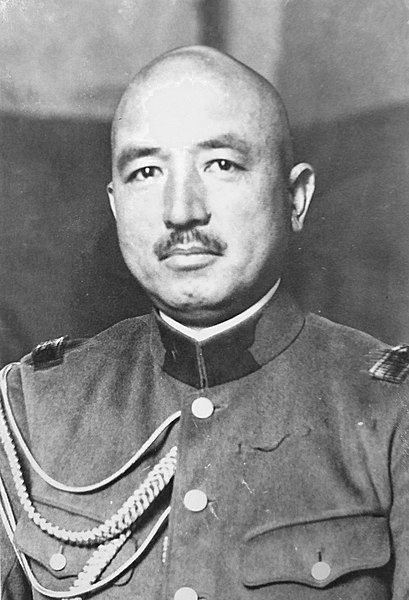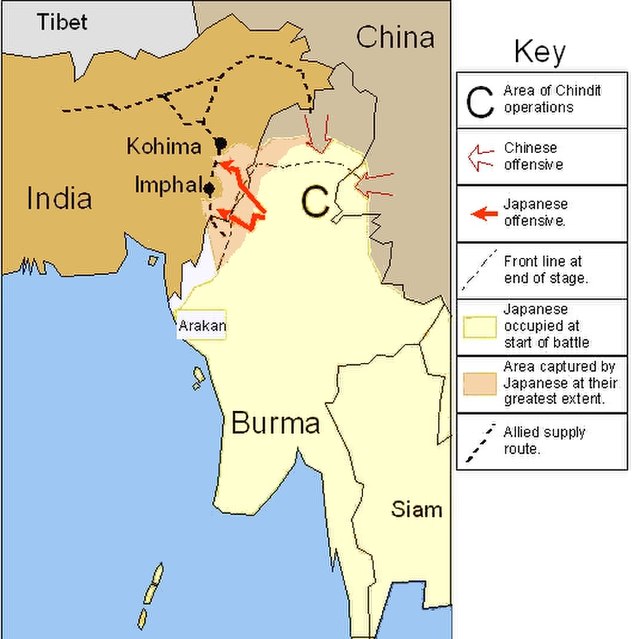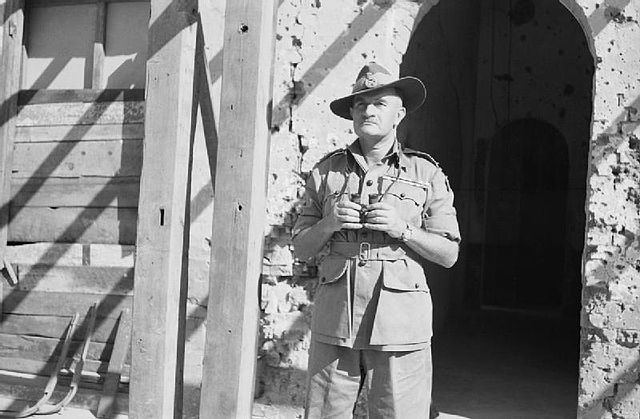The Battle of Imphal took place in the region around the city of Imphal, the capital of the state of Manipur in Northeast India from March until July 1944. Japanese armies attempted to destroy the Allied forces at Imphal and invade India, but were driven back into Burma with heavy losses. Together with the simultaneous Battle of Kohima on the road by which the encircled Allied forces at Imphal were relieved, the battle was the turning point of the Burma campaign, part of the South-East Asian theatre of World War II. The Japanese defeat at Kohima and Imphal was the largest up until that time, with many of the Japanese deaths resulting from starvation, disease and exhaustion suffered during their retreat. According to voting in a contest run by the British National Army Museum, the Battle of Imphal was bestowed as Britain's Greatest Battle in 2013.
Gurkhas advancing with Grant tanks to clear the Japanese from Imphal-Kohima road in North Eastern British India
Lt. Gen. Renya Mutaguchi, commanding Fifteenth Army
Imphal and Kohima campaign
Lieutenant General William Slim, commanding Fourteenth Army
Imphal is the capital city of the Indian state of Manipur. It is the fourth largest city in northeast India after Aizawl. The metropolitan centre of the city contains the ruins of Kangla Palace, the royal seat of the former Kingdom of Manipur, surrounded by a moat. Spread over parts of the districts of Imphal West and Imphal East, the former contains the majority of the city's area and population. Imphal is part of the Smart Cities Mission under the Ministry of Housing and Urban Affairs. Being a mega commercial hub, Imphal is known for its weaving, brass-ware, bronze-ware, and other cottage industries. Meitei language is the most widely spoken language in the city.
Image: Imphal At Dusk
Image: Temple of God Pakhangba of Sanamahi religion inside the Kangla Fort, Imphal West, Manipur
Image: Uttra sanglen
Image: Kangla Fort Complex, Imphal (216)








